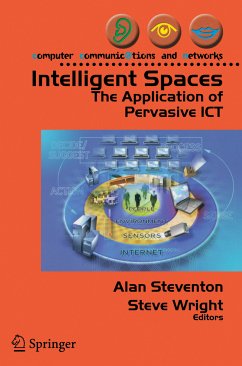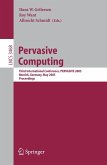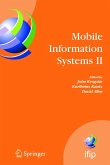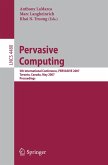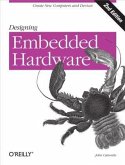An iSpace consists of
. The physical world in which the user exists, in his/her relevant context.
. The interface between the digital world and the physical world. This contains embedded sensors to gather data, labels to identify objects, actuators to control things/appliances in the physical world, together with support software to facilitate non-intrusive two-way communication across the interface,
. The digital world in which digital knowledge and intelligent systems are available to intelligently analyse data gathered from the physical world, and to influence and support our actions in that physical world.
Intelligent Spaces: The Application of Pervasive ICT describes the vision and how it has already been demonstrated in a number of applications ranging from the home, healthcare and traffic systems to monitoring glaciers. It identifies many of the technical, human and business issues which need to be researched before the benefits can become widespread, and describes possible solutions to them. Academic & industrial researchers in Computer Science, IT & Communications, as well as practitioners will find this key reading as it delivers practical & implementable current research.
Dieser Download kann aus rechtlichen Gründen nur mit Rechnungsadresse in A, B, BG, CY, CZ, D, DK, EW, E, FIN, F, GR, HR, H, IRL, I, LT, L, LR, M, NL, PL, P, R, S, SLO, SK ausgeliefert werden.
and Networks)
Steventon A., Wright S., Springer-Verlag New York, Inc., Secaucus, NJ, 2005. 438 pp.
Type: Book
Date Reviewed: Mar 16 2006
Information and communication technology (ICT) has been around for several years. It
improves the way we compute and communicate, and yet human lives have remained
essentially the same. However, this is about to change. As this book explains, every facet
of human endeavor will be affected and changed (for the better, we hope) by pervasive
ICT, referred to here as intelligent spaces (iSpaces).
The book consists of 24 chapters written by different authors. The topics can be roughly
divided into five parts. The first part introduces the basics of iSpaces: what they are, their
impact, and the science and technology needed behind them. The second part briefly
explains several applications of iSpaces, ranging from supply chain, home, and community
environment to the monitoring of highway traffic and glaciers. The third part discusses
trust, privacy, and security issues in iSpaces. The fourth part is oriented more toward
technology, discussing several implementations of iSpaces. The final part examines the
digital infrastructure that will need to be there in order for iSpaces to work. In general, this
book is well edited and each chapter is concise. However, 24 chapters are a lot to digest
and perhaps the fourth part could have been omitted without affecting the value of the
book too much.
The intended audience for this book is not clear. If meant for the general public, then the
authors could perhaps have focused more on the social impact and changes iSpaces will
bring. Color images would also help to engage readers.
One final question comes to mind: are iSpaces always good for people? Have any disasters
occurred in the past due to pervasive (or some may say invasive) ICT? A chapter or two
discussing real examples of the downside of iSpaces would help this book to be more
complete and insightful.

